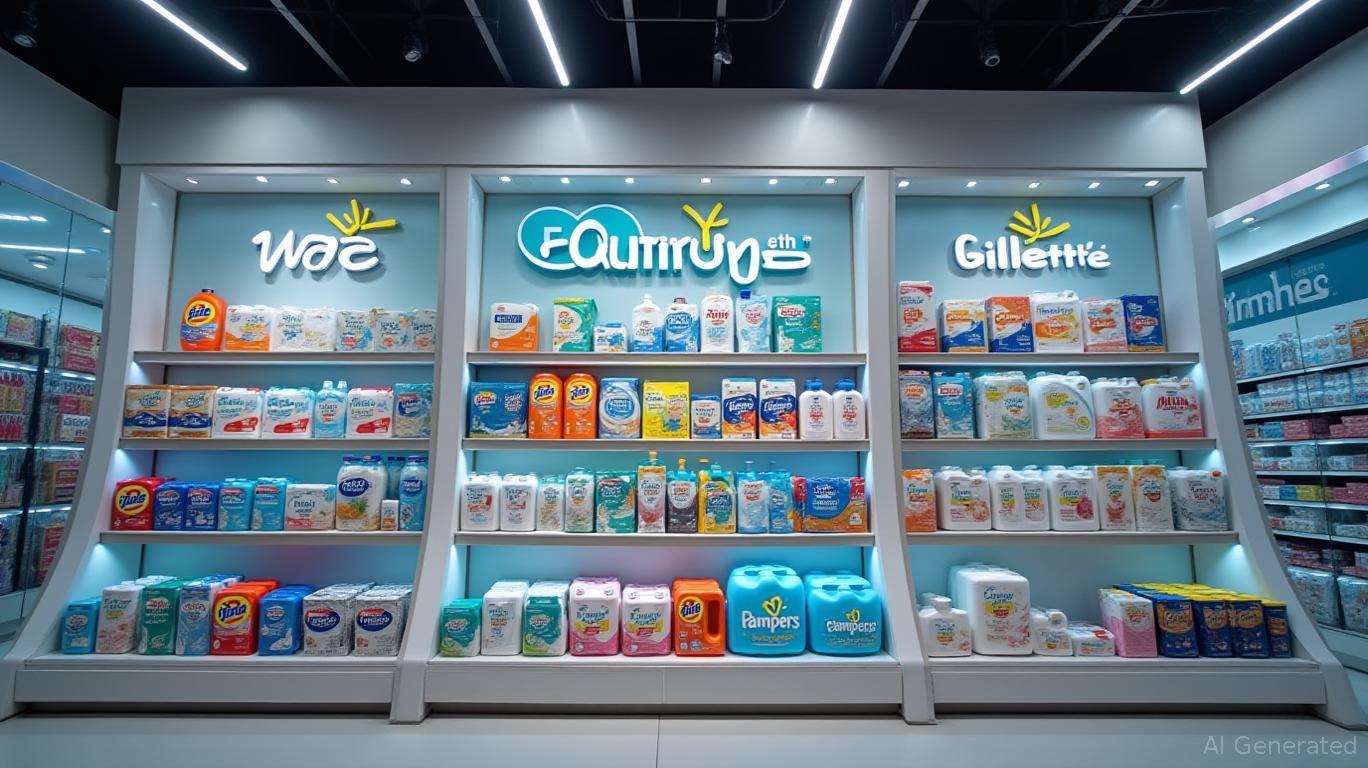Procter & Gamble's Restructuring Play: A Blueprint for Resilience in a Tariff-Turned-Turbulent Market?
In a world where tariffs and trade tensions have become as routine as quarterly earnings reports, Procter & Gamble (P&G) has unveiled a bold restructuring plan aimed at fortifying its position as a consumer goods titan. With job cuts, brand exits, and supply chain overhauls, the company is betting that aggressive cost optimization and portfolio rationalization can shield it from geopolitical headwinds—and set a strategic template for the industry. But will this approach deliver sustainable value, or is
overestimating its ability to navigate a fragmented market?
The Anatomy of P&G's Restructuring
P&G's restructuring, announced in early 2025, is a multifaceted response to a perfect storm of challenges: rising input costs, uneven consumer demand, and the lingering specter of tariffs. At its core, the plan involves three pillars:
1. Cost Cuts: Reducing 7,000 non-manufacturing jobs (15% of its administrative workforce) to save $1.5 billion annually by 2026.
2. Portfolio Focus: Exiting non-core brands and markets to concentrate resources on high-margin staples like Tide, Pampers, and Gillette.
3. Supply Chain Overhaul: Centralizing decision-making in “Orchestration Rooms” and digitizing logistics to achieve a 98% shelf-availability target.
The financial cost is steep: $1 billion to $1.6 billion in charges over two years, with 25% of those costs non-cash. Yet P&G argues these moves are necessary to counteract a 30–50 basis point drag on sales from brand exits and to bolster margins amid inflationary pressures.
A Tariff-Driven Playbook for Consumer Staples
P&G's strategy reflects a broader industry shift toward resilience in the face of trade volatility. With tariffs on Chinese imports adding an estimated 2–3% to costs annually, consumer goods companies are under pressure to squeeze efficiencies without sacrificing innovation. Here's how P&G's approach aligns with—and diverges from—sector trends:
Cost Optimization as a Competitive Weapon
The job cuts and supply chain investments aim to reduce operational redundancies, a tactic that has worked for peers like Coca-Cola and Unilever. However, P&G's focus on preserving R&D and manufacturing roles underscores a belief that innovation must remain sacrosanct. This is a calculated risk: while trimming administrative layers could free up capital, over-reliance on pricing power (already a key driver of P&G's margin expansion) might backfire if consumers revolt against sticker shock.
Portfolio Rationalization: A Double-Edged Sword
By exiting non-core brands, P&G is mirroring strategies employed by L'Oréal and Nestlé, which have jettisoned underperforming assets to focus on premium segments. But this approach carries risks. Competitors like private-label retailers and eco-conscious startups are capitalizing on the niches P&G is abandoning, particularly in sustainability-driven markets. The question is whether P&G's core brands can evolve fast enough to retain relevance.
Supply Chain Agility: The New Profit Lever
P&G's push to centralize supply chain decisions and digitize warehouses reflects a recognition that 21st-century consumer goods giants must be as tech-savvy as they are brand-savvy. This is a welcome shift, but execution is critical. Competitors like Walmart, with its data-driven logistics, have shown how such investments can drive top-line growth. P&G's 98% shelf-availability target is ambitious—and if met, could insulate it from stockouts in a fragmented retail landscape.
The Investment Case: Pragmatism Over Optimism
For investors, P&G's restructuring presents a nuanced opportunity. On one hand, the company's stock—trading at 22.5x forward earnings, below its five-year average—hints at undervaluation relative to its growth potential. The $1.5 billion in annual productivity gains could meaningfully lift margins, especially if cost cuts avoid stifling R&D.
On the other hand, risks loom large. Over-reliance on pricing could erode market share in a cost-conscious consumer environment, while competitors may poach customers in exited categories. Additionally, geopolitical uncertainties—such as U.S.-China trade relations—remain beyond P&G's control, leaving its cost-savings vulnerable to new tariff shocks.
The Wider Investment Implications
P&G's moves underscore a critical truth for consumer goods investors: resilience is now a core competency. Companies that can balance cost discipline with innovation—think L'Oréal's tech-driven beauty labs or Coca-Cola's sustainable packaging initiatives—will thrive. Conversely, firms clinging to bloated portfolios or outdated supply chains risk obsolescence.
Investors should prioritize two criteria:
1. Margin Expansion Clarity: Look for companies with transparent plans to offset inflation and tariffs through cost cuts, not just price hikes.
2. Brand Agility: Firms like P&G that can pivot core brands to meet emerging trends (e.g., eco-friendly detergents) will outlast those relying on legacy products.
Final Verdict: A Prudent Bet, With Caveats
P&G's restructuring is a necessary evolution in a world where tariffs and trade wars are here to stay. Its focus on cost efficiency, core brands, and supply chain modernization positions it to weather near-term turbulence. However, investors must remain vigilant about execution risks and the potential for margin gains to flatten if competitors outmaneuver P&G in niche markets.
For now, P&G's stock offers a reasonable entry point for long-term investors willing to bet on its strategic discipline. But the broader lesson is clear: in an era of trade volatility, only the leanest and most adaptable consumer brands will flourish.
This article provides a balanced analysis of P&G's restructuring, emphasizing its strategic strengths and vulnerabilities. Investors should monitor P&G's margin performance and innovation pipeline closely. For those seeking exposure to the sector, consider a selective approach favoring companies with similar cost-cutting clarity and brand agility.

Comments
No comments yet